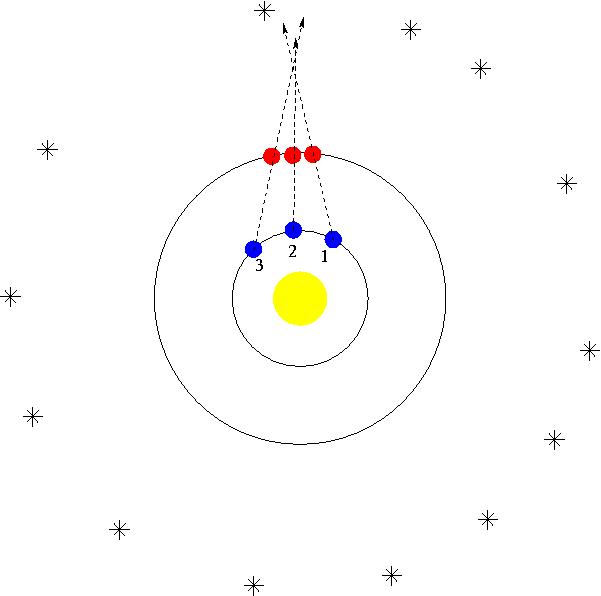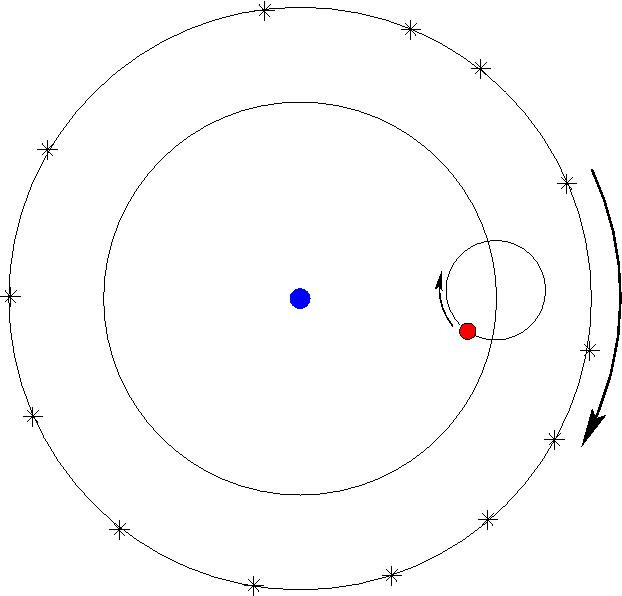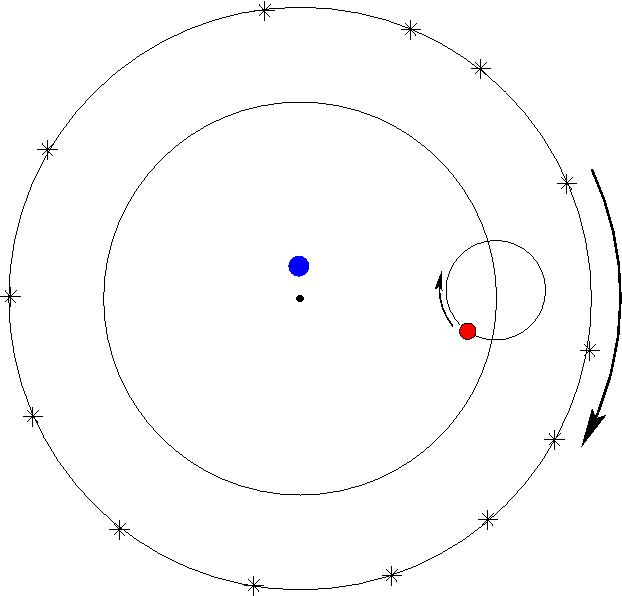In Class:
Question to Ponder
Which of the following pieces of evidence rules out a geocentric model for our
universe?
- a) The Sun is much bigger than the Earth.
- b) Retrograde motion of the planets.
- c) The Sun's annual motion through the sky.
- d) None of the above.
Aristotelean Physics
- All terrestrial materials made from mixture of four elements -- fire, air, water, earth.
- Planets are made of other stuff -- quintessence.
- Stasis is the natural state of things. If in motion, an object
will eventually slow down and come to rest.
Is the Earth Moving?
- Test: throw a ball into the air.
- The ball while in air isn't attached to the Earth, so it will
naturally slow down.
- If the Earth is moving, it should continue to move while the
ball is in the air.
- Consequently, the ball should "fall behind" and land behind its
launch site.
- This does not happen -- a ball thrown straight up falls straight
back down.
- Therefore, the Earth cannot be moving.
Cosmologies Involving a Stationary Earth
- If the Earth isn't moving, then the celestial sphere certainly
is.
- Stars are attached to a sphere surrounding the Earth that rotates
once every sidereal day.
- Planets are attached to individual spheres nested just inside the
celestial sphere. These spheres rotates at slightly slower rates,
allowing the planets to "drift" slowly with respect to the stars.
- Model first proposed by Eudoxus (~350 BCE) and modified and championed
by Aristotle (~325 BCE).
Aside on Observations in Antiquity
- Observational accuracy was quite good.
- No telescopes, but with sighting sticks, measurements could be
made with an accuracy of 1/6th of a degree.
- Highly accurate records of astronomical observations were kept by
the Babylonians, Egyptians, and Chinese.
- Other cultures (Mayan, North American Native Amerians, early
Britons) produced monuments like Stonehenge that showed a thorough
understanding of the motions in the sky.
- These observations were not applied to models of the structure of
the universe.
- It was assumed that observations were "imperfect reflections" of
the true ideal system of the universe, and therefore were of no use in
the hunt for its inner workings.
Problems with Simple Geocentric Models
- Retrograde motion:

Planets appear to reverse direction in the sky.
- Nested sphere models don't account for this.
- Problem solved with the insertion of epicycles:

Motion of planet is still uniform and circular, but planet moves on an
epicycle whose center rides on a deferent around the Earth.
- Still more touble -- seasons aren't the same length.
- Hipparchus solves this problem with an eccentric:

Motion is still uniform and circular, though not centered on the Earth.
When to Abandon a Model
- The geocentric model started out very simple and elegant.
- Modifications to produce the phenomena seen (e.g., retrograde,
length of seasons) make the model much more complicated and clumsy.
- Once stripped of its initial beauty, the model has little going
for it.
- Time to look for another description.
|
![]()


